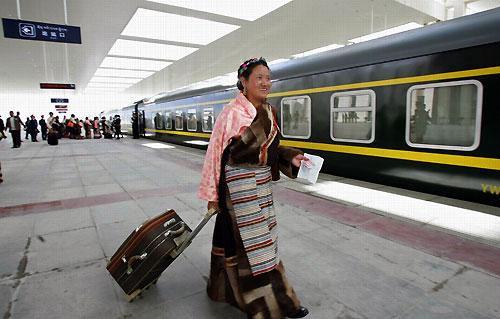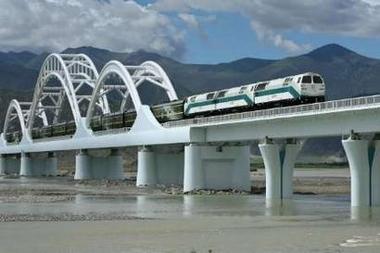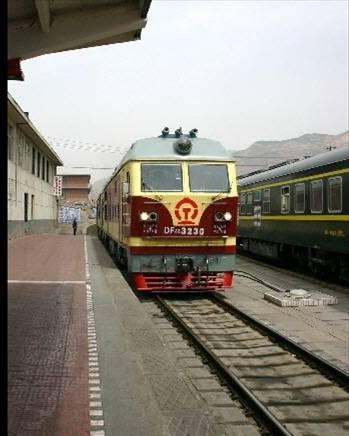
After five years of construction, the Qinghai-Tibet Railway, the world s highest rail-link, begins operation. The first passenger train on the Railway set off on July 1, 2006. It s the first railway linking the Tibet Autonomous Region with the outside world. Chinese President Hu Jintao highly praised the move, saying the railway is important to economic and social development of the region.
Chinese President Hu Jintao delivered a keynote speech at the ceremony. He said that the opening to traffic of the Qinghai-Tibet railway is another magnificent accomplishment achieved in the socialist modernization drive. He also noted that the railway is strictly protecting the environment along the railway.

Following the ceremony, President Hu Jintao cut the ribbon for the launching of the railway. The first train, coded "Qing 1", left Golmum station for Lhasa, capital city of the Tibet Autonomous Region, at around 11 o clock Saturday morning. The train carried about 600 passengers and is expected to arrive in Tibet s regional capital Lhasa around midnight. The train leaves Golmud at about 2,800 meters above sea level, winds through the towering Tanggula Mountain Pass at 5,072 meters, and finally arrives in Lhasa at some 3,600 meters.
Minutes laters, the first train leaving Tibet also took off the Lhasa station.
The first train from the Chinese capital of Beijing started its journey of 4,060 kilometers for Lhasa, capital of the Tibet Autonomous region Saturday evening.
|
CNR DF4D diesel locomotive is hauling train passing through Xining station The Qinghai-Tibet railway stretches almost 2,000 kilometers from Xining, capital of Qinghai Province, to Lhasa. Nearly 1,000 kilometers of the Qinghai-Tibet Railway s tracks are located at 4,000 meters above sea level. CNR supply shunting locomotives for Qinghai-Tibet Railway. CNR main-line diesel locomotives and electric locomotives are also the main force on this line. |






